127 mm: the gold standard for marine snipers
Flying crowbars
In modern high-precision ammunition of 127 mm caliber, it is difficult to recognize an artillery shell. It is rather a small surface-to-surface missile. For example, Lockheed Martin’s NGP (Navy Guided Projectile) projectile is 1,37 meters long and can fly 120 kilometers. In fact, with the classic NGP shell, only the way to launch through the gun’s barrel makes him related.
The Americans were one of the first to be bothered by high-precision shells in the 127 mm form factor when, in the 70s of the last century, they developed an adjustable laser-guided munition. The work was then carried out at the Naval Surface Warfare Research Center fleet NSWC (Naval Surface Warfare Center). It was a development for the five-inch naval gun Mk45, which had just appeared in sight at that time. Now about 260 ships around the world are armed with various modifications of this gun, the last of which Mod4 has a barrel with a length of 62 calibers. It is noteworthy that at a maximum rate of fire of 20 rounds per minute with conventional shells, the cannon can fire guided munitions of 10 pieces per minute.
If we take the approximate cost of one “smart” projectile MS-SGP (which will be discussed later) at 55 thousand dollars, then it is easy to calculate that in less than 120 seconds the Mk45 will release a million “green” into the sky. Of course, no one in their right mind would do this in peacetime, but the potential itself is impressive. At the same time, in contrast to land artillery artillery systems with expensive high-precision shells, it is much easier for ship 127 mm shells to find a worthy target in the water area.
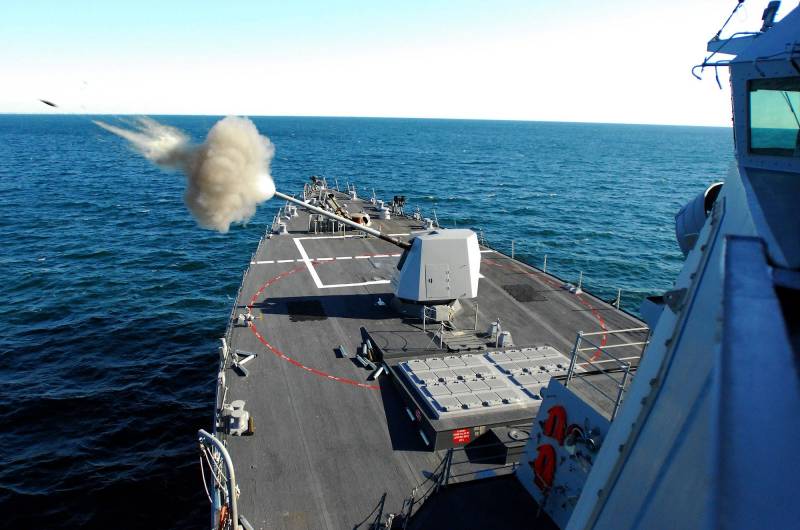
The American 127 mm BAE Systems Mk 45 Mod 4 universal artillery launcher with a barrel length of 62 calibers on a U.S. Navy ship. Photo: forums.eagle.ru
But back to the brief stories five inch shells. In the 90s, the US Navy launched a program for an active-rocket projectile ERGM (Extended Range Guided Munition), which was guided by GPS and the inertial navigation system INS. This projectile had a probable circular deviation of 20 meters and was able to fly off at the expense of a solid propellant rocket engine in the tail for 117 kilometers. The toy turned out to be very expensive - the main developer Raytheon spent over half a billion dollars on a shell for twelve years of work, but it still did not reach the required level of the Navy. In the 2000s, on the basis of ERGM developments, ATK (Alliant Techsystems Missile Systems Company) launched the BTERM (Ballistic Trajectory Extended Range Munition) project, which, as the future showed, also turned out to be a dead end.
The developers sought to combine the flight of a projectile along a high-speed ballistic trajectory with the possibility of increasing the accuracy of the hit by correcting the trajectory using GPS and an inertial guidance system. Unlike ERGM, the BTERM shell flies most of the time in uncontrolled mode along a near-ballistic trajectory without planning, and only at the final section is it guided. This allowed us to simplify the design of the projectile and reduce its susceptibility to electronic countermeasures of the enemy. Programs launched at different times on managed “five-inch” programs were synchronously completed in 2008.
BAE Systems attacks
The Multi Service, Standard Guided Projectile (MS-SGP) is another attempt by the U.S. Navy to obtain a guided projectile for the Mk45 gun. The work in this case was entrusted to BAE Systems, which did not begin to develop a projectile from scratch, but deployed it on a 155 mm LRLAP platform. At the same time, multifunctionality was initially laid in the ammunition - if necessary, the five-inch MS-SGP could be safely used in the ammunition of the 155-mm artillery system. For this, two rings were put on the shell, providing obturation and centering in the channel of the larger caliber guns. It turns out such a peculiar guided sub-caliber projectile of a universal use profile. Why do all these tricks? Everything, as always, rests on financing. Five years ago, BAE Systems calculated the cost of NATO’s three-day operation in Libya when the coalition released about 320 Tomahawk Land Attack Missile targets for ground targets. This totaled half a billion dollars, despite the fact that many goals were much cheaper than one Tomahawk.
If MS-SGP were in service in 2011, then, according to BAE marketers, the cost of this part of the military campaign did not exceed 15 million. In the most ideal case, a 127-mm projectile flies 100 kilometers - for this he needs a new gun Mk45 Mod4 and a charge Mk67 as an instrument. In the variant of using MS-SGP in a 155-mm gun (for example, in the M777 / M109 howitzer) it flies “only” for 70 kilometers.
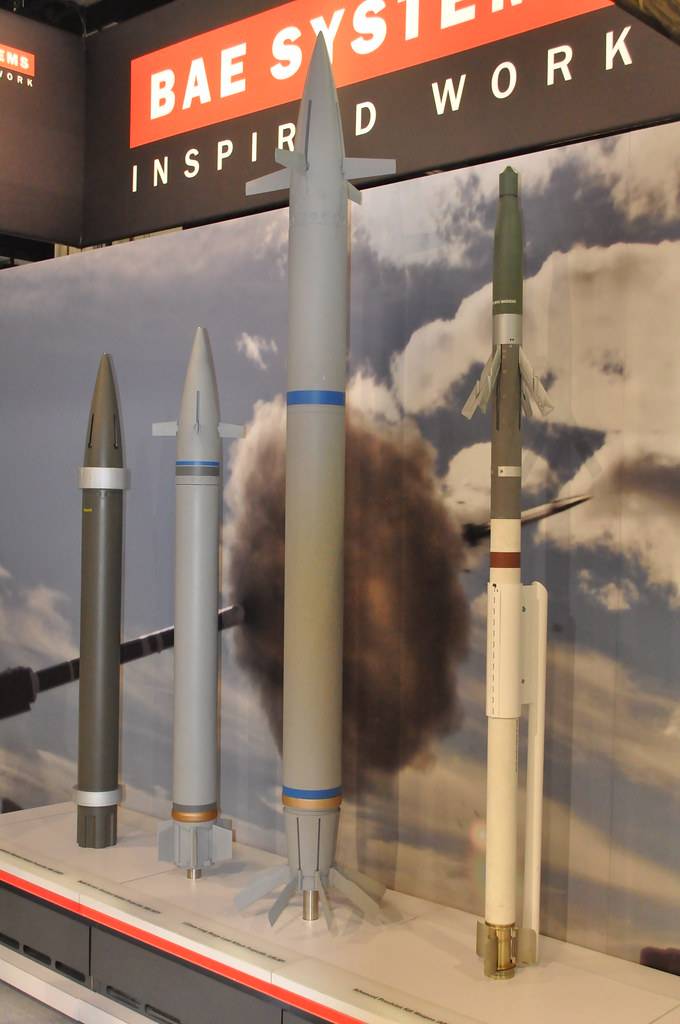
From left to right: the 127 mm MS-SGP shell for 155 mm guns, the 127 mm MS-SGP shell and the 155 mm LRLAP shell. Exhibition Sea-airspace-2014. Photo: flickr.com
The projectile boasts a probable circular deviation of 10 meters, and during tests at the White Sands training ground showed a deviation from the target at a distance of 36 kilometers of only 1,5 meters. If in real conditions, far from polygon greenhouses, weapon If it shows similar accuracy, then MS-SGP will become a real sniper high-tech for the Navy. An important advantage over the five-inch adjustable Excalibur Naval 5-inch (it was discussed in the material "Elder Brothers": 127 mm and 155 mm ammunition of a potential enemy ") MS-SGP has an inertial guidance system that allows it to work when GPS is lost or the enemy makes jamming. In the near future, taking into account successful tests, the BAE novelty should be put into service with the US Navy.
A few more naval guided shells
Again, based on the 155-mm adjustable LRLAP, Lockheed Martin is designing the NGP (Navy Guided Projectile) projectile, which should be an inexpensive alternative to the systems described above. This development is even more like a cruise missile than all previous shells, however, there is no jet engine. But there are folding wings that allow you to plan for a target 120 kilometers away. The ballistics of the flight is uncomplicated - at the highest point, the wings of the NGP open, the speed drops and the ammunition calmly follows its target or follows it. Lockheed Martin plans to teach a 36-kilogram projectile to follow target maneuvers, which will make it possible to destroy fast attack boats and even cruise boats that are now fashionable Drones, stuffed with explosives and intelligence equipment.
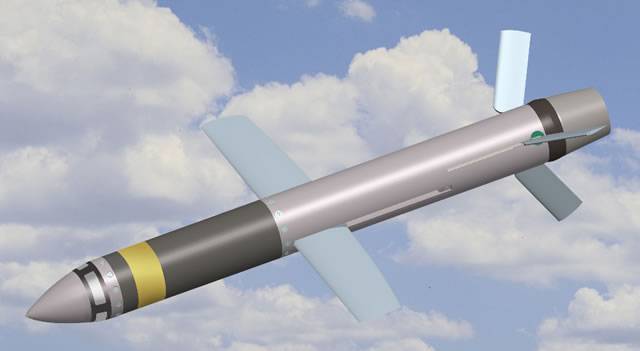
Adjustable NGP. Photo: prokhor-tebin.livejournal.com
American gunsmiths call their shells various abbreviations, from which they ripple in the eyes. We need to take an example from European manufacturers, who in 2003 initiated the Vulcano program, aimed at developing sub-caliber projectiles for 127-mm naval guns. The head developer is the Italian Oto Melara, which provided for three modifications of Vulcano at once. The first version of the Vulcano BER (Ballistic Extended Range) is an unguided multi-purpose projectile increased to 60–70 km range. At the same time, such a range is provided not due to the solid rocket engine, but due to the lower resistance of the projectile and the greater speed. Stability is ensured by plumage. As it has already become clear, the other two Vulcano versions are controllable and are made according to the aerodynamic scheme "duck". The performance of the Guided Long Range, or GLR, is crammed with expensive equipment - there is an inertial guidance system, a GPS module, and even a homing thermal head. Such "smart" Vulcano can be performed in two variations - for hitting armored targets and for striking to targets that are 100-120 km away.
By the way, Italians do not really rely on the Mk45 staff and developed their own naval artillery installation 127 mm / 64 LW. As is clear from the index, the barrel length is 64 gauges. It is this gun that provides a 120-kilometer flight range competitive for Vulcano with a sniper circular deviation of 20 meters.
Based on materials from the publications: "Izvestiya TulGU. Technical sciences", "Marine collection", navalnews.com, forums.eagle.ru.

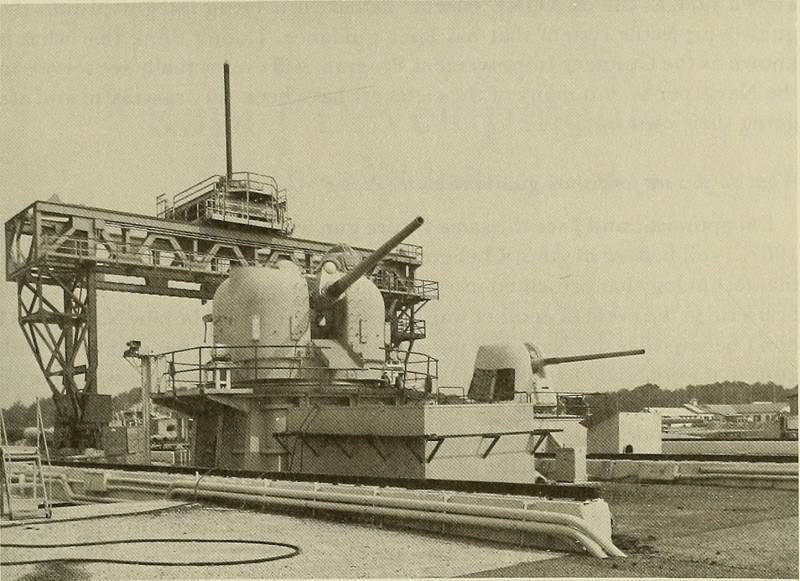
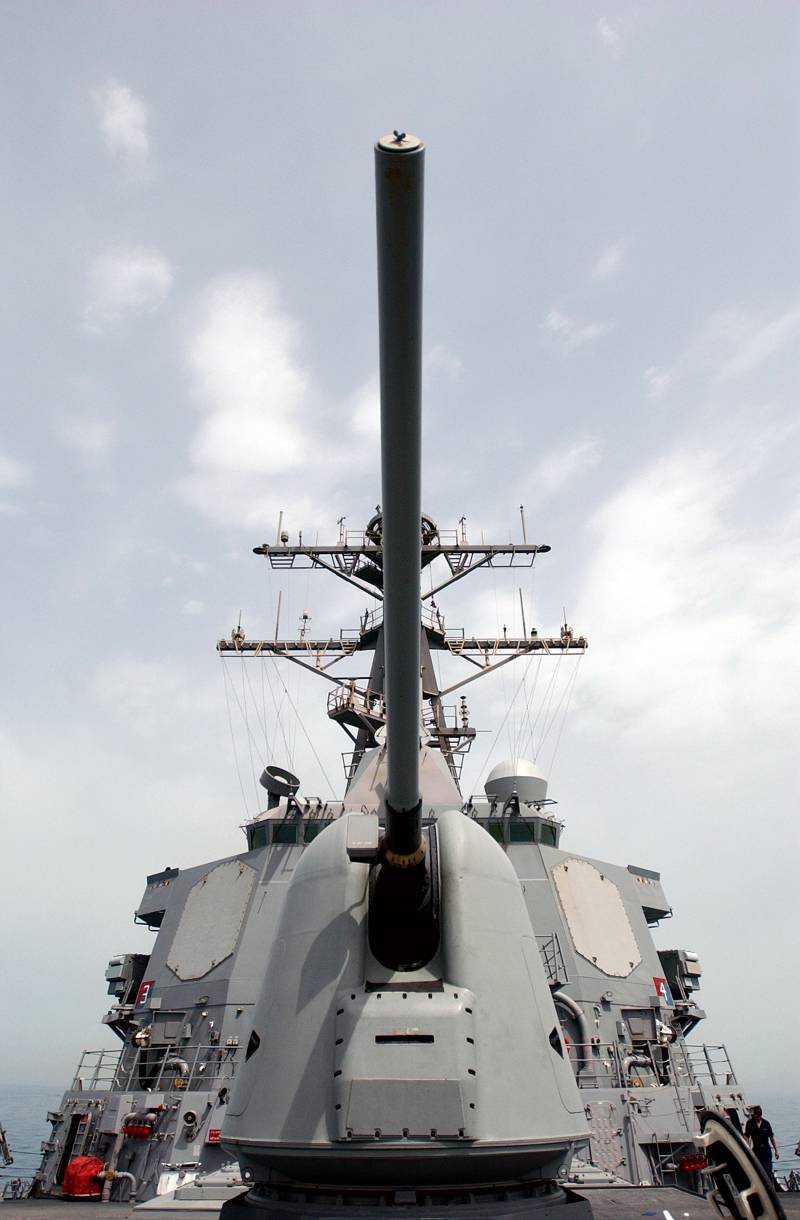
Information